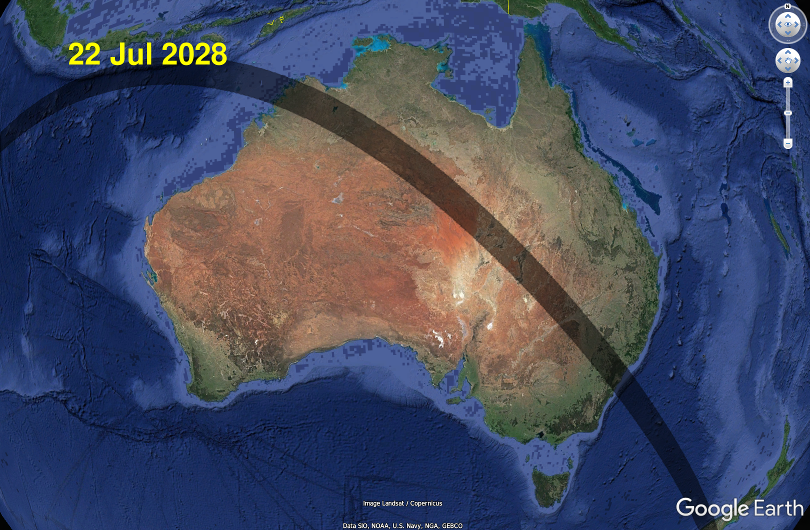The 22 July 2028 Total Solar Eclipse in Australia

This eclipse begins its path in the Indian Ocean, crossing the Cocos Islands and Christmas Island before reaching mainland Australia in the Kimberly region of WA. It then travels generally southeastwards across the continent, passing directly over Sydney, and then across the Tasman Sea to southern New Zealand before ending in the south Pacific Ocean.
Towns and locations within the path of total eclipse include Kununurra, the entire Lake Argyle reservoir, Tennant Creek, Davenport, Bedourie, Thargomindah, Hungerford (which also sees the 2030 eclipse), Bourke, Dubbo, Gilgandra, Mudgee, Bathurst, Orange, Lithgow, Gosford, Wollongong, and the entire Sydney metropolitan area. It also passes over Queenstown and Dunedin in New Zealand.
Two weeks before this eclipse, on the morning of 7 July 2028, a partial lunar eclipse is visible from Australia.
Eclipse viewing in Australia on 22 July 2028
This is Australia's longest-duration total solar eclipse during the 21st century. Its maximum duration of about 305 seconds occurs in the remote Kimberly region of Western Australia, decreasing to about 290 seconds as it crosses the Stuart Highway in the Northern Territory outback, to about 255 seconds near Thargomindah and then to about 224 seconds through Sydney. The duration is still about 167 seconds when it crosses Dunedin in New Zealand. Locations in Western Australia and Northern Territory that see this total eclipse will also see about 90 minutes of partial eclipse before and after. Sydney sees about 70 minutes of partial eclipse before and after.This page is currently under construction. Please visit again in future.